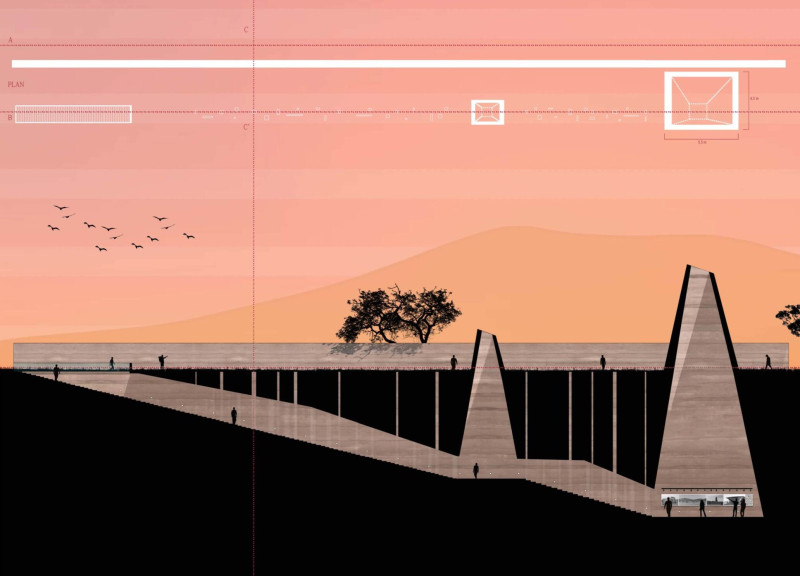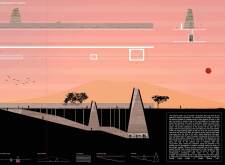5 key facts about this project
The pavilion rises from the ground in a way that connects with its natural surroundings, carrying both a functional and cultural purpose. It is designed within a context rich in history. The building draws inspiration from the traditional shapes of ancient African minarets, which gives it a unique identity as a sacred space. The design focuses not only on the experience of visitors but also on honoring the earth as a significant part of human heritage.
Conceptual Framework
The central idea focuses on the experience of emerging from the earth, guiding visitors from underground to above ground. Two conical structures rise upward, creating a relationship between light and shadow. Large openings at the tops of these forms allow daylight to enter, enhancing the experience inside and creating a connection between the earth and the sky.
Functional Aspects
The pavilion serves as the endpoint of an underground path, leading visitors to a rich experience. Upon arrival, guests are welcomed into an exhibition area that features photographs showcasing earthen architecture through time. This collection highlights a range of structures, from simple huts in rural villages to complex mosques in Niger and modern designs by Francis Kéré. It emphasizes the historical importance of earth as a building material in architecture.
Spatial Relationships
A smaller structure positioned between the two conical forms acts as a transition point on the way to the pavilion. This area serves as a light well, bringing in natural light while playing an important role in the overall flow of the design. The arrangement of these elements creates a smooth connection from underground to the pavilion, guiding visitors through both physical movement and the idea of transformation.
The architectural language of the pavilion expresses respect for cultural identity and heritage. It brings together material choices, forms, and experiences that highlight the human connection to the earth. As visitors walk upwards toward the light, the rising shapes symbolize birth and renewal, enhancing their interaction with the space.



















































